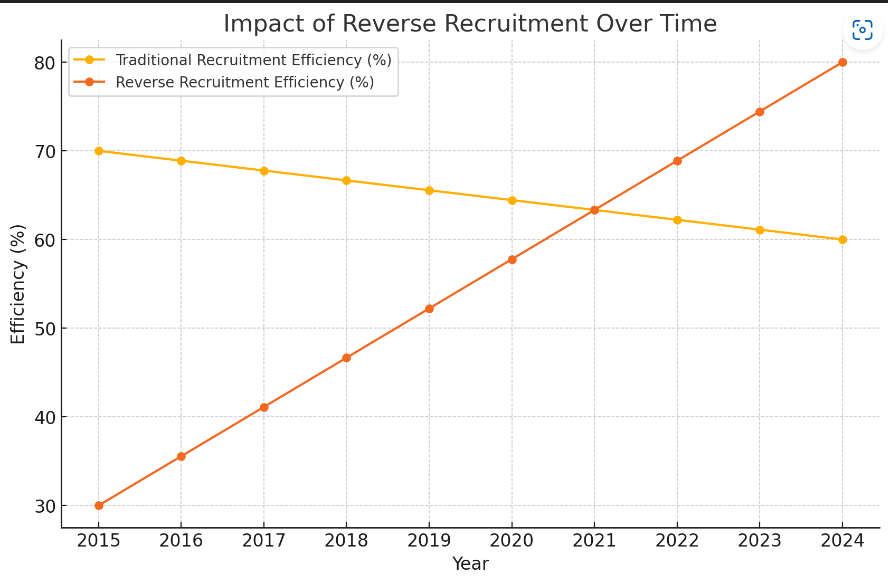The Impact of Reverse Recruitment on Modern Hiring Practices
scale.jobs
July 24, 2024
Reverse recruitment is revolutionizing the talent acquisition landscape by fundamentally altering how companies and candidates interact. Instead of companies casting wide nets and sifting through numerous applications, reverse recruitment empowers job seekers to take the initiative, resulting in a more streamlined and targeted hiring process. Let's delve into the broader implications of this innovative approach on modern hiring practices.
Enhanced Candidate Engagement
In traditional recruitment, candidates often feel like passive participants, submitting resumes and waiting for a response. Reverse recruitment, however, transforms job seekers into active players in the hiring process. They create detailed profiles, showcase their skills and experiences, and directly connect with potential employers. This active engagement boosts candidate confidence and satisfaction, as they have more control over their job search journey.
Increased Efficiency for Employers
For employers, reverse recruitment offers significant time and cost savings. Instead of spending resources on job postings, screening, and initial interviews, companies can access a curated pool of candidates who have already expressed interest and met preliminary qualifications. This targeted approach reduces the time-to-hire and ensures that employers focus their efforts on candidates who are genuinely interested and well-suited for the roles.
Better Matching of Skills and Opportunities
Reverse recruitment platforms often use advanced algorithms and AI to match candidates with job opportunities based on their skills, experiences, and preferences. This technology-driven matching process enhances the likelihood of finding the right fit, benefiting both employers and job seekers. Companies can identify candidates who align with their specific needs and culture, while job seekers find roles that match their career aspirations and skill sets.
Transparency and Collaboration
Reverse recruitment fosters greater transparency and collaboration between candidates and employers. Job seekers can showcase their portfolios, work samples, and recommendations, providing employers with a comprehensive view of their capabilities. Simultaneously, employers can offer detailed insights into their company culture, values, and expectations, allowing candidates to make informed decisions about potential job opportunities.
Adapting to a Digital-First World
The rise of remote work and digital transformation has further accelerated the adoption of reverse recruitment. With geographic boundaries becoming less relevant, companies can tap into a global talent pool, while job seekers can explore opportunities beyond their immediate locality. This digital-first approach aligns well with the current trend towards remote and hybrid work models, offering flexibility and expanded possibilities for both parties.

Challenges and Considerations
While reverse recruitment offers numerous advantages, it also comes with challenges. Ensuring data privacy and security is paramount, as candidates share extensive personal and professional information online. Additionally, maintaining a balance between automated processes and the human touch is crucial to avoid a purely transactional hiring experience. Employers must also adapt to the shift in power dynamics, recognizing that candidates now have more influence in the recruitment process.
Conclusion
Reverse recruitment is not just a trend; it's a transformative approach that is reshaping the future of talent acquisition. By prioritizing candidate engagement, leveraging technology for better matching, and fostering transparency and collaboration, reverse recruitment creates a win-win scenario for employers and job seekers. As the job market evolves, embracing this innovative method will be key to staying competitive and attracting top talent in an increasingly digital and interconnected world.
Looking for a revolutionary way to find your next career opportunity? Join scale.jobs today and experience the power of reverse recruitment, where your skills take centre stage and top employers come to you!
Land Jobs Faster and Easier withHuman Assistants
We will apply to jobs on your behalf with ATS Friendly Custom Resumes and Cover Letters in < 24 hours, so you can focus on Networking and Interview Prep.